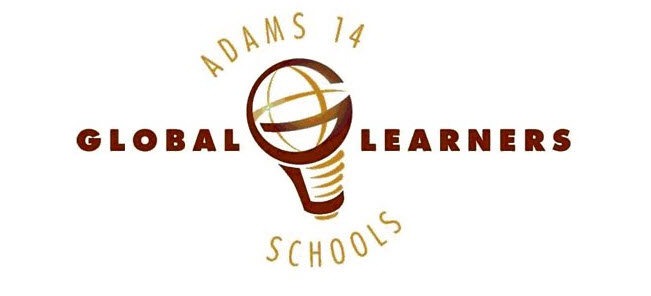Subscribe to:
Post Comments (Atom)
skip to main |
skip to sidebar
Search This Blog
Followers
FEEDJIT Live Traffic Map
Blog Archive
-
▼
2008
(156)
-
▼
August
(17)
- An invitation to join my classroom blog + classroo...
- Netiquette
- Organizing student data in Excel
- Here We Go!
- Bilingual babies...
- Fifth Grade Class Website and Blog
- Internet resources for Block style handwriting
- Data collection
- 6 word memoirs (a story in 6 words)
- Plants in your classroom
- Multi-lingual math glossary
- My blog addy
- Re:Smart Board as center
- PBS Teacherline Resources
- slideshare.net
- Knol
- a couple of cool sites and a request to share othe...
-
▼
August
(17)
Answer Tips
Global Learner Blogs and Web Sites
- Aimee Stork (Rose Hill-K5 Music Education)
- Andrew Giles (Monaco Elementary School-Kindergarten)
- Anne Oltman (KMS - Math Collaborative Site)
- Brianna Sealy (Alsup Elementary School-3rd Grade)
- Deb Welner (Alsup Elementary - 5th Grade
- Jeremy Schriner (KMS - 6th grade science)
- Jill Gamberg (Rose Hill Elementary-2nd Grade)
- Jim Haynes (ACMS - Science)
- Jon Fisher (Kemp Elementary School-2nd Grade)
- Katie Coggin (Alsup Elementary-3rd Grade)
- Kelly Buerster (Rose Hill - Blog)
- Kelsey Booth (Monaco Elementary-1st Grade)
- Lisa Garcia (ACHS, AVID Language Arts)
- Liz Springer (Rose Hill Elementary-5th Grade)
- Robbie Robinson (Monaco Elementary - 5th Grade)
- Sara Zaleski (Dupont Elementary-2nd Grade)
- Sarah Czaja (Monaco Elementary-Kindergarten)
- Sarah Duran
- ~Global Learner Google Site~
Contributors
- Barkman
- Brian Fuller
- Colleen Urlik
- Dave Tarwater
- Deborah Welner
- Drew Giles
- Elizabeth Hopkins
- Emily Taylor
- Fred Kreienkamp
- Jeff Lewis
- Jennifer Skrobela
- Jenny Chamberlain
- Jeremy S
- Jesse Brown
- Jesse Brown
- Jill Gamberg
- Jim Haynes
- JoAnn Lopez
- Jon Fisher
- Joseph Miller
- KL
- KaiJin Emily Klein
- Kelly Berry
- Kelly Buerster
- Kristin Edwards
- Laurie Arnold
- Lisa Garcia
- Luc Eagon
- Melissa Garcia
- Mr. Palmer's 5th Grade
- Mrs. Ceretto's Class
- Mrs. T
- Mrs. Waheed's Class
- Ms. Booth
- Ms. Sealy's Class
- Nicole Stokke
- Oltmanac
- Penny
- Robert Robinson
- Room 19
- Sarah C.
- Sarah Feaster
- Stewart
- TDeaguero
- The Davenports
- Todd
- Tom Ciolek
- Unknown
- Wesley Robinson
- acsd14PIO
- aimee.stork
- doug.abshire
- jmtnguitar
- kathy
Global Headlines: Technology
Grant Support
This program is supported by a grant awarded by the U.S. Department of Education under Title II, Part D of the Elementary and Secondary Education Act (NCLB) – Enhancing Education Through Technology to the Colorado Department of Education, Education Technology Unit, Colorado Competitive Grants for Power Results 2006-07.


3 comments:
This is a great video Dorothy! I found it interesting that the reporter in the video refers to the children developing a set of circuitry for each language and storing the information in two different parts. Some neuroscientists would argue that the information is stored in the same region in children who learn two languages from a very young age -particularly for reading. In the book "How the Brain Learns", David Sousa points out that functional Magnetic Resonance Imaging studies show that in children who learn two languages early process both languages in the same region (Wernicke's and Broca's area) and that people who learn a second language later process each language in slightly different area. This may explain why it's harder to learn a language once you get older.
Great posting!
Sousa, David A., 2005: How the Brain Learns. 3rd Ed. Thousand Oaks, CA. Corwin Press
Given the idea that language learning can occur simultaneously and children develop circuitry be it in separate areas of the brain or same (depending on age of experiences with L1 or L2) supports the idea that the literacy instruction in 2 languages will not confuse children. The suggestion is literacy instruction can occur as early as possible. The question becomes how is the instruction best delivered and/or do you deliver instruction in 2 languages or just 1?
Post a Comment